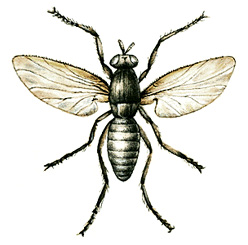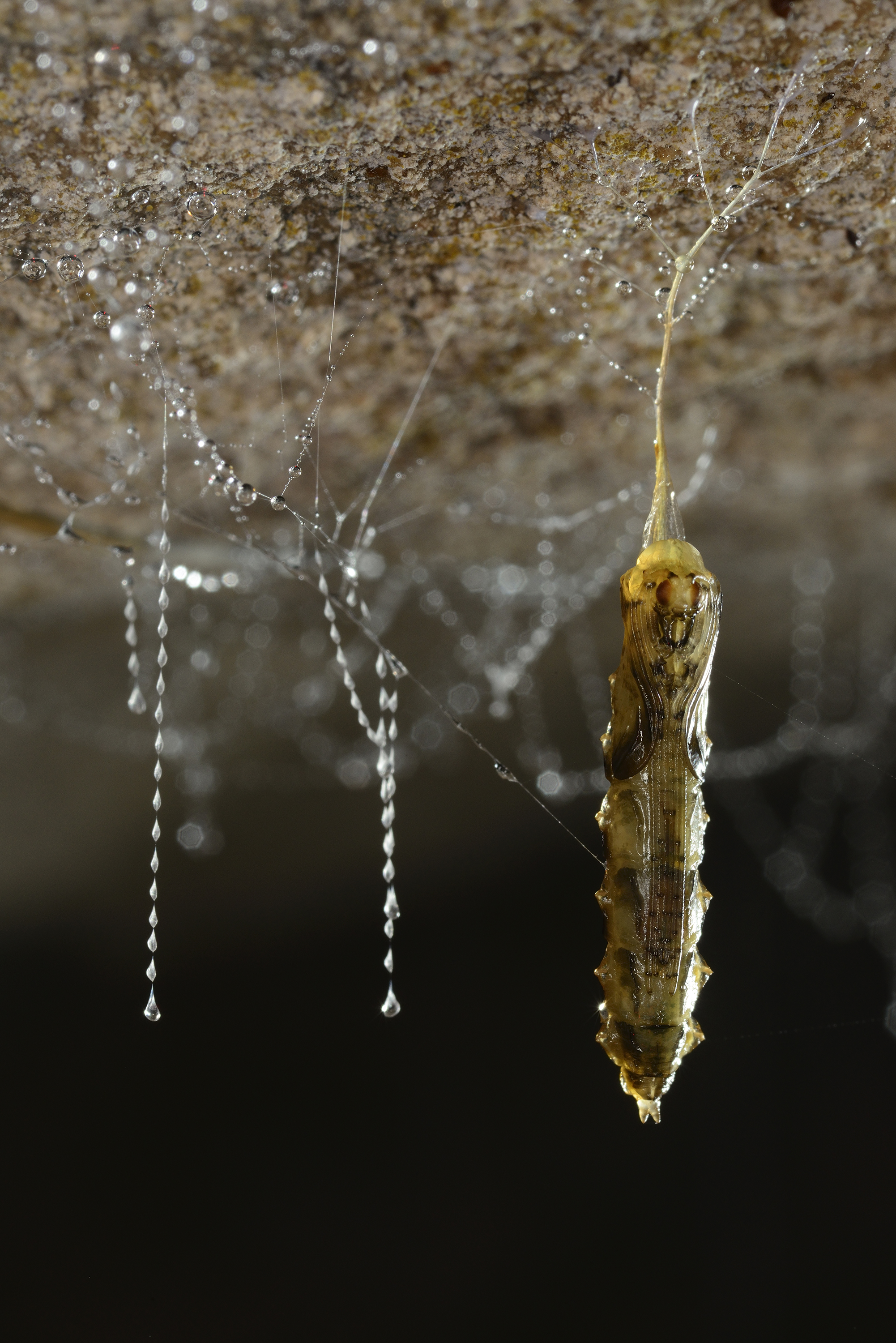Gnat, << nat, >> is a general name given to a wide variety of small flies. Some types of gnats feed on the blood of animals, including human beings, and have a surprisingly painful bite. Other types of gnats do not bite. A gnat has mouthparts that form a snout called a proboscis. A biting gnat uses the proboscis to pierce the skin of the animal on which it feeds.

Some gnats, such as black flies, lay their eggs on water. The eggs float for one to several days and then hatch. The larvae (young) cling to rocks in fast-flowing streams. Black flies live in most parts of the world, from the polar regions to the tropics. In some tropical and subtropical regions, black flies spread a disease called onchocerciasis or river blindness. This disease may cause blindness.

Other types of gnats, including wood gnats and fungus gnats, lay eggs in decaying plant material, on moist foliage, and in mushroom gardens. Gnats called biting midges, punkies, or no-see-ums lay eggs in or near sand, mud, tree holes, and wet plant debris. These tiny gnats have a fierce bite and are serious pests throughout the United States. Certain gnats lay their eggs in plant tissue, causing galls (swellings) in the plant. The Hessian fly, which attacks wheat, is among the most harmful of these gnats. See Midge; Hessian fly.
There are a great variety of nonbiting gnats. Most of them are types of midges or fruit flies.
